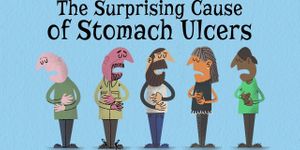Restoring Bone Loss with Amniotic Fluid Cells
The precious fluid that protects a baby in the womb may also hold the potential to restore bone loss. Such discovery, researchers say, can benefit patients from ‘crib to grave’ - that is, very young babies with bone disease to the aging and elderly who suffer from bone loss. Furthermore, the team also hopes to help astronauts whose bones become brittle due to space travel.
In addition to carrying the baby, a pregnant woman also carries the weight of amniotic fluid - the clear, yellowish liquid that serves to cushion the fetus. The volume of this liquid is the greatest at around 34 weeks of gestation, when it averages to about 800 milliliters. Aside from acting as a cushion, the fluid also allows the exchange of nutrients and other molecular contents between the mother and the baby.
In most instances, the amniotic water is discarded during delivery. However, scientists at the Great Ormond Street Hospital and University College London saw great potential in this liquid. From previous research, they knew that the fluid also contains stem cells shed from the pregnancy. In particular, they hypothesized that the stem cells, known as human amniotic mesenchymal stem cells, can be used to treat bone diseases.
The team collected amniotic fluid from pregnant mothers either during amniocentesis or right before birth. They then purified the fluid to collect human amniotic mesenchymal stem cells, which were then injected into mice with osteogenesis imperfecta (OI). Osteogenesis imperfecta describes a number of bone conditions marked by reduced bone formation and brittle bones.
Injection of the stem cells resulted in mice with stronger bones. The animals’ bones had increased plasticity and structure, which contributed to a significant reduction in bone fractures.
"Here, we show that intraperitoneal injection of human amniotic mesenchymal stem cells (AFSCs) into a mouse model of OI (oim mice) reduced fracture susceptibility, increased bone strength, improved bone quality and micro-architecture, normalised bone remodelling and reduced TNFα and TGFβ sigalling,” the team wrote in their Science Report publication.
Whereas previous research suggest transplantation of human fetal mesenchymal stem cells could help enhance bone formation, the results suggest that amniotic stem cells could be an easier alternative. "I am extremely excited because this is a major breakthrough that will potentially affect everyone,” said Pascale Guillot, the study’s senior author.
"We are already used to putting cream on our face to slow down ageing of the skin, this will be the same for the skeleton,” said Guillot. "I think in the next few years we will have ways to slow down the ageing of our skeleton to reduce fractures and pain.
The results have already spurred plans for clinical trials. In addition to testing in people who suffer from bone malformations, the team also hopes to help astronauts whose bones also become brittle from space travel. "Stem cell transplants boost these lazy cells so they become very eager to make more bone and mature bone," said Guillot.
Additional source: BBC









